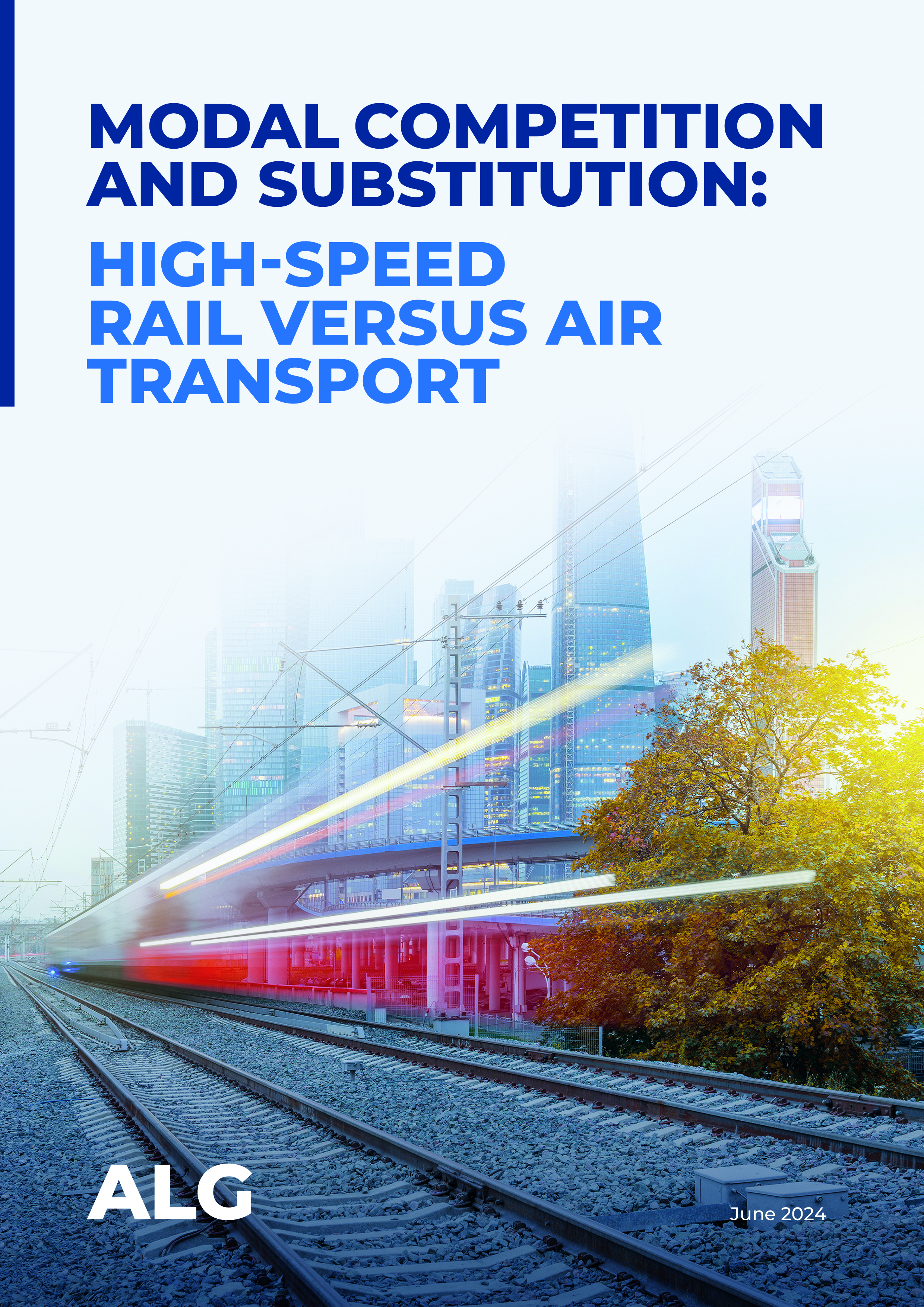In-depth insights

Modal competition and substitution: high-speed rail versus air transport
High-speed rail (HSR) networks are rapidly expanding worldwide, driven by their excellent performance, superior passenger experience, and significant environmental benefits. The global push for sustainable transport has resulted in record funding for projects aimed at decarbonizing transportation, signaling a robust and growing trend. This shift is redefining the landscape of modern transportation, with HSR emerging as a compelling alternative to air travel for many travelers.
This publication explores the dynamics of modal competition and substitution between high-speed rail and air transport, examining travel patterns along major European transport corridors to evaluate the impact of key factors driving this shift.
Throughout these sections, we analyze the key drivers contributing to HSR’s enhanced performance on selected European routes by assessing the critical influence of door-to-door travel time on choosing high-speed rail over air transport and evaluating the relationship between increased rail demand and reduced prices due to heightened intrasector competition. Moreover, we delve into the reasons for the resilience of air traffic on specific routes where the aviation sector maintains strong competitiveness despite advancements in rivalring HSR routes.
Furthermore, we present a comprehensive case study of the Barcelona-Madrid corridor, highlighting the impact of historical travel time reductions along the route and demonstrating how the recent rail sector’s liberalization, leading to price reductions and expanded offerings, has further boosted HSR’s modal share.
Looking ahead, we assess potential limitations for the further development of HSR and explore future opportunities to integrate rail and air transportation by enhancing connectivity to airports and fostering partnerships with airlines.
See more insights